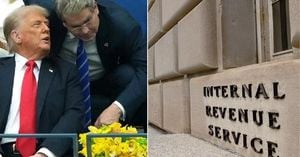Changes to retirement savings plans are on the horizon for 2025, and they promise to make saving for retirement easier for many Americans. This follows the enactment of the "Secure 2.0" law by Congress, which introduced several significant updates to the way 401(k) plans operate.
While saving for retirement can be challenging for many, with almost four out of ten American workers feeling behind (partly due to debt and income issues), the upcoming changes are being welcomed by experts. Dave Stinnett, head of strategic retirement consulting at Vanguard, emphasized the importance of 401(k) plans as the primary way most Americans prepare for retirement and noted their effectiveness when well-structured.
So, let’s break down the pivotal changes coming to 401(k) plans. First up is the increase to contribution limits. Starting next year, employees can defer up to $23,500, which is up from $23,000 in 2024. For those aged 50 and older, there’s also good news; catch-up contributions are on the rise. Employees aged between 60 and 63 can contribute up to $11,250, pushing the maximum savings to $34,750 for those targeted workers.
It’s worth noting the current state of participation. According to Vanguard's latest report, only about 14% of employees maxed out their 401(k) contributions last year. Meanwhile, approximately 15% of workers made use of catch-up contributions when available. These numbers suggest there’s still room for improvement as more Americans seek to build their retirement funds.
Now, for part-time workers, there's relief coming as well. Under the provisions of Secure 2.0, access to workplace retirement plans is being extended to more part-time workers. Starting this upcoming year, employers are required to offer access to those who’ve worked at least 500 hours per year for two consecutive years. This is significant because previously, the requirement was three years. For many long-term part-time employees, this change is seen as remarkably beneficial as they often find it difficult to qualify for retirement benefits.
Citing statistics, approximately 73% of civilian workers had access to workplace retirement benefits as of March 2023, with participation rates hovering around 56%. The changes ushered by Secure 2.0 aim to broaden this coverage and help more workers enjoy the benefits of retirement savings.
Another notable change hitting 2025 includes mandatory auto-enrollment for newly established 401(k) plans. Beginning next year, most new 401(k) and 403(b) plans will have to automatically enroll eligible employees with at least a 3% deferral rate. Experts like Alicia Munnell, director at the Center for Retirement Research at Boston College, believe this auto-enrollment will lead to significantly increased participation and, by extension, savings.
Though auto-enrollment features can tremendously boost savings, experts caution it might not guarantee optimal savings levels. Financial planners often recommend setting retirement savings targets at around 15%, but many plans cap automatic escalations, usually limiting them to 10% or less of annual pay. This cap could dampen the potential benefits of auto-enrollment if not addressed, as reported by the Plan Sponsor Council of America.
To sum it all up, 2025 is shaping up to be a transformative year for retirement savings, particularly for individuals who may have previously struggled to secure enough for their future. With the combination of higher contribution limits, broader access for part-time workers, and automatic enrollment features, these changes could pave the way for more Americans to prepare effectively for retirement.



